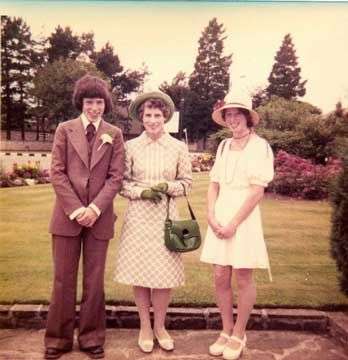The 1920s, also known as the Roaring Twenties, were a time of great social and cultural change in America. Women’s fashion underwent a dramatic transformation during this decade, as they began to reject the restrictive and traditional styles of the past and embrace a new sense of freedom and independence.
Here are some of the key changes that occurred in women’s fashion during the 1920s:
1. Shorter Hemlines
One of the most noticeable changes in women’s fashion during the 1920s was the introduction of shorter hemlines. Women began to wear shorter skirts that fell above the knee, allowing for greater freedom of movement. This new style was popularized by flappers, young women who embraced the new culture of the Roaring Twenties.
2. Loose-fitting Clothing
Another significant change was the move away from restrictive clothing towards more loose-fitting styles. This included dresses and blouses with dropped waistlines, as well as trousers and shorts. The looser, more comfortable styles allowed women to move and dance with greater ease.
3. Jazz Age Accessories
The 1920s were also known for their elaborate accessories, such as long pearl necklaces, feather boas, and cloche hats. These accessories added to the glamour and sophistication of the era, and were often seen on flappers and other fashionable women.
4. The Rise of the Flapper
The 1920s saw the rise of the flapper, a young woman who rebelled against traditional gender roles and embraced a new sense of freedom. Flappers wore short skirts and dresses that allowed for ease of movement, and they often wore their hair in a bob or a shingle cut. The flapper look was all about being stylish and comfortable, and it quickly became a fashion sensation.
One of the most iconic looks of the 1920s was the “flapper” look. This style was characterized by a loose, straight silhouette that emphasized a youthful, carefree attitude. Women’s clothing became much shorter, with hemlines rising above the knee, and dresses and skirts no longer featured corsets or restrictive undergarments. Instead, loose-fitting, drop-waist dresses became popular, with fabrics such as silk and chiffon adding to the flowy, ethereal look.
5. The Flattening of the Chest
Prior to the 1920s, women’s fashion emphasized a curvaceous figure, with an emphasis on a small waist and a full bust. In the 1920s, however, this changed, and the ideal figure became more boyish. Women began to flatten their chests with bandeau bras, allowing them to wear the straight and loose-fitting dresses.
6. Bobbed Hair
Along with the shorter hemlines and looser clothing, women’s hairstyles also underwent a radical change in the 1920s. The “bob” haircut, with its short, straight cut that reached just above the ears, became the symbol of the new, modern woman. This hairstyle was both practical and daring, as it allowed women to move freely and also signaled a break from traditional gender roles.
7. Accessories
Accessories also played an important role in defining women’s fashion in the 1920s. One of the most notable accessories was the cloche hat, which was worn low on the forehead and tightly fitted around the head. This hat became synonymous with the flapper look and added to the overall sense of youth and rebellion.
Other popular accessories included long pearl necklaces, feather boas, and Art Deco-inspired jewelry. The use of makeup also became more widespread during this time, with women wearing dark eye makeup and bright red lipstick to complete the look.
8. Impact on Society
The changes in women’s fashion during the 1920s had a profound impact on society. The flapper look, with its shorter hemlines and looser clothing, was seen as scandalous by some and represented a rebellion against traditional gender roles. Women’s newfound freedom of movement, both in terms of clothing and hairstyle, signaled a shift towards a more independent and assertive female identity.
Overall, the changes in women’s fashion during the 1920s reflected the social and cultural changes of the time. The flapper look, with its youthful energy and rebellion against tradition, continues to be celebrated and recognized as a defining moment in fashion history.
